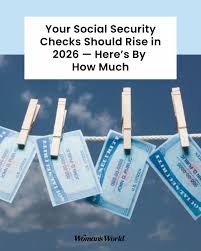Social Security recipients can expect a modest boost in their benefits in 2026, though rising Medicare premiums will offset part of the increase. Each year, Social Security payments are adjusted based on inflation through a Cost of Living Adjustment (COLA). For 2026, preliminary reports suggest the COLA could be around 2.7% to 2.8%, up slightly from the 2.5% increase received in 2025.
The adjustment is based on inflation data released by the U.S. Bureau of Labor Statistics (BLS). According to the Economic Press Release on September 11, 2025, the Consumer Price Index (CPI) for August 2025 rose 0.4% on a seasonally adjusted basis, following a 0.2% increase in July. Food at home increased 2.7% over the 12 months ending in August, highlighting ongoing cost pressures for households. The CPI for September 2025, set to be released October 15, 2025, will provide the final data used to determine the COLA.
Historically, Social Security COLAs have varied. The 2025 COLA was 2.5%, while the 2024 adjustment was 3.2%. Using current projections, the Senior Citizens League (TSCL) estimates the 2026 COLA at 2.7%. For an average Social Security recipient receiving $2,000 per month, a 2.7% increase would translate to an extra $54 per month. While any increase is welcome, retirees should keep in mind that rising Medicare premiums will reduce the net gain.
Also Read
Medicare Part B premiums are expected to rise in 2026, as they typically do alongside the COLA announcement. For 2025, the standard monthly Part B premium was $185. Based on projections from Medicare trustees, the premium could increase by $21.50 in 2026, bringing the monthly cost to $206.50. This means that of the $54 increase from the COLA, only about $32.68 would remain after accounting for the higher Medicare premium.
Even though retirees will see some additional funds in their monthly payments, the net gain is modest. Fixed-income households often face rising costs for essentials such as food, gas, and utilities, so this increase may cover only small discretionary expenses. For example, the remaining $32.68 could pay for a single grocery trip, a tank of gas, or a small clothing purchase.
The COLA is designed to help retirees keep up with inflation, but the rising cost of healthcare, particularly Medicare premiums, continues to challenge retirees’ budgets. Organizations like AARP and Retirement Living emphasize that while Social Security adjustments are helpful, many beneficiaries need to carefully plan their finances to manage ongoing increases in living costs.
In summary, 2026 will bring a small but meaningful Social Security increase, estimated at 2.7%, providing an extra $54 per month for the average retiree. However, the projected rise in Medicare Part B premiums will reduce the net benefit to about $33 per month. While not enough to cover large expenses, this modest increase offers some relief in navigating higher living costs, helping retirees maintain their purchasing power amid ongoing inflation and healthcare expenses.












